
The City That Bleeds
In the Dragon Lands, the earth bleeds.
Black, cracked volcanic rock seethes with impossible heat from the magmatic rivers that flow, unceasing, from the countless volcanoes that dot the blasted landscape. An endless line of twisted peaks runs from horizon to horizon, squatting giants that belch ash and gas into the sky, burning the clouds black. Some of them lie dormant. Most of them die.
Together, they are known as the Worldspine.
The Scar is not a volcano, but you’d be forgiven for thinking it is. The draconic creatures that call the plain home certainly believe it to be. They spin and twist within the boiling air currents that churn from it, soak in the pools of lava at its base, leap and surf down the waterfall of molten rock that has cascaded languidly down the sides for eons.
Sometimes, dragons find patches in the cemented ash that covers the sides of the peak – places where the rock comes away in their claws in crackling, crystalline dust. The dragons don’t think about it. The dragons don’t recognise it, because it dried up so very, very long ago.
The Scar is not a volcano. It is where the Earth bleeds.
The Scar sits alone.
It boils up out of the ground around it like an abscess – the enormous circular crater glows white-hot with pus, the edges an angry red. The caldera crooks at a jaunted angle, lava tumbling in sheets down its buckled sides, as if an invisible hand is pouring it from an earthen cup onto the landscape.
The Scar is deceptive. Beneath its crater, beneath the mountain’s hideous mass, there is a churning sea of magma, an underground lake that laps and scrapes beneath the floor of the earth. It is ever-growing – crashing in waves against the dirt and stone that lines the walls of its caverns, gradually eroding it, consuming it. It has seethed for eons. It will not cool for eons more.
The land should have long since collapsed into the lava lake. It would have, were it not for the impossible plates of diamond-hard, galvanised material that cleanly separate it from the layers of earth above – the floor of the world. A ceiling over Hell.
The plates shine with oily iridescence when exposed to sunlight, like scales.
Inside the cavern of the lake, there are holes in the walls. They are small – only big enough for a pony, if that – and they are countless, spider-webbing through the ground and into the dark. At first glance, they seem like mine shafts, carved out by industrious hands (or hooves) – but the walls are ridged, too natural to be industrial, too unnatural to be geological.
The tunnels are littered with tiny fossils – little legs and wings and glistening chitin, perfectly preserved. They crunch underfoot, heaped up in mounds.
Within those tunnels, there are even smaller burrows. If one were small enough to follow them, they might find hives, containing petrified spheres clutched to the breasts of those same insectoid fossils.
The walls of the tunnels aren’t formed from stone, nor from dirt.
And, everywhere, seeping from the walls, is that same crackling, crystalline dust. Most of it has dried up, but here and there it still carries the sheen of a deep, deep red.
Deeper in, where the tunnels end, the walls shine bone-white in the lingering lava light.
It is not a gradual change. The sedimented ash and dust and stone falls away sharply, laying bare the impossibly smooth ivory walls of the cavern.
The whiteness is marred, in places, by deep black scorch marks. Within these black patches, little mounds of slagged material have fused to the floor, the ceiling, the walls, congealed into misshapen globes, like frozen tar.
This is not the only cavern. It branches into more branches, overlaps with them, entwines, connects with those same tiny tunnels to caverns that lie deeper still. It is a network.
All of them lie parallel, shooting straight southward from the source.
Sometimes, the slag twists into familiar shapes. Here, there is the skeleton of a fibrous wing. There, a claw juts from the ivory into gnarled hooks, or a clenched fist. Sometimes, they are held aloft, palm up, as if in supplication.
In other places, the shapes are harder to define. The horn of a beetle, maybe, or an antenna. A wing of spun glass, impossibly delicate.
A reptilian skull fused, unnaturally, to an insect’s carapace.
Pairs of mismatched wings flutter, ever so slightly, in the volcanic breeze that flows up, from the south, towards the farthest end of the tunnel. When the ground rumbles, the southward end of the tunnel flares with firelight that reveals a shadow – a biped, one arm splayed behind it, the other shielding its face – of something that had stood there, once, briefly, and will now forever stand there, as a pattern of carbon upon the walls of bone.
And as the light passes over the walls, there are more patterns there – reptilian creatures crawling from the walls and slashing at swarming, stinging insects.
A mural. An ink-spot tapestry of a battle lost to time, captured like a snapshot by some impossible heat.
Then the ground rumbles, and the firelight fades, leaving the tunnel in darkness. There are many others like it, in that skeletal network – countless, enormous bones, scorched and blackened and buried in the ground, containing only burnt, dead things.
At the farthest end of the tunnel of bone is an enormous chamber. Lightning arcs in its darkness. The brilliance of it reveals, briefly, a throne of flesh.
Or, rather, a throne of what was once flesh – now fossilised. It forms an uneven, coagulated mass, poked through with countless burrowed holes.
In the holes are more insects. Many of them are burnt and blackened. A sparse few flicker with sparks of electricity. Impossibly fine threads, woven throughout the chamber, pulse in response before falling lifeless.
The flickering happens three times, briefly, then three times again, but longer. It repeats the pattern, winking intermittently in the dark.
A glassy, yellow-orange substance coats the ivory walls and pools thickly on the floor. In the amber, countless clutches of eggs are forever suspended.
The amber sluices through the fossilised membrane of the throne of flesh, which has curled in upon itself. Cocooned within it is an enormous insect – legs thick as tree branches, eyes like fist-sized black pearls, stained-glass wings curled along the edges of a house-sized abdomen, corpulent and spherical. It is perfectly still, save for the crown of antennae upon its head that vibrate invisibly in the gloom, flickering with electrical energy.
Dot dot dot. Dash dash dash. Dot dot dot.
The Queen sleeps. Perhaps someday her message will be received.
The royal chamber is incomplete. If one were to dig into the dirt that has buried the thing so far beneath the ground, they might find huge, thick shards of bone, broken from some immense impact.
But the royal chamber is not the only thing lying there, underground, waiting.
If they were to follow the path back – back along the tunnel of bone, out along one of the countless tunnels that feed in from the lake of lava inside the enormous, churning organ beneath the Scar – back along the countless ridges of the Worldspine that poke out through the earth’s crust, jettisoning magma into the world above – out, along the length of an enormous shoulder blade, trailing country-sized flaps of desiccated leather…
The skeleton spans the width of the Dragon Lands, touching its furthest edges with its outstretched wings, the tip of its tail, the shattered skull that contains the Queen. One of its arms, outstretched, plows deep, deep into the earth, as if to break its fall.
Inside the ribcage of the enormous husk, at the southward end of the corpse-strewn tunnel that connects the lava-spewing Scar to the royal chamber, there is a raging core of molten metal. The other arm is curled up here, blackened from its proximity to the core but intact. The fingers of the skeletal hand curl around that core, cradle it desperately, forming yet another cocoon in the darkness of the underground.
Within that cocoon of giant, gentle fingers, there is an egg. It is enormous. It burns with the heat of suns, the glory of stars.
It will not hatch yet. Give it time.
In the Dragon Lands, the Earth breathes.
The volcanic vents on the Worldspine mountains, the countless tiny tunnels through the earth around the Scar – in all of these places, if one closes their eyes and listens, they can hear the sound of distant bellows, feel on their face the hot wind that pokes through from beneath the ground. It smells like burnt bone, and ash, and scales.
The holes through which the Earth breathe were not naturally formed. In the dirt and stone around them, one can see the slashes and tears of countless claws, digging desperately. Crawling on all fours out of the ground, towards the sky.
Far above the city-corpse, the dragons twirl in the heat of the blood and breath of the Earth, and know nothing.

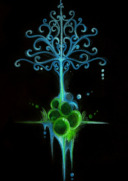
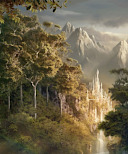









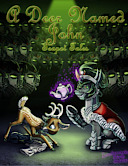

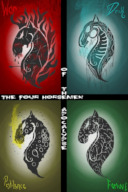
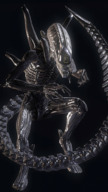







new pearwords??? :O
this is a must read, then.
Fascinating, haunting, and enigmatic. If I'm interpreting this correctly, this is the origin of more than one species. Thank you for an excellent read.
This was an absolutely beautiful read, and sent chills down my spine. the way you manage to write such engaging descriptions that build up a captivating storyline humbles me.
Good Pear words, yes yes, very good
More coherently put, I quite enjoyed this.
listen pear this is some good scenery porn okay
🧀🧀🧀/🍐🍐🍐 from me
8858171
But what what the relationship between changelings and dragons?
Oh no, must save spoodergirl
It’s been a while since you’ve published something, hasn’t it?
What a great way to get back into the swing of things.
Evocative and engaging. A splendid work.
I'm still thinking about the exact nature of the tragedy we are seeing here.
So. This was something.
If I'm reading this right, then the impression I'm getting is that something big, something pregnant and draconic and of a very fiery nature, fell from space and died as it did. It had parasites, or symbionts, or something along those lines living within it, that had a civilization within its body. These may have been one kind -- some of the remains you describe make me think of chimeras with insectoid and draconic characteristics -- or possibly two -- the battle scenes make me think of this last option. Perhaps they were one kid and then diverged. Regardless, these creatures fought each other -- if they weren't two kinds before, they were by this point. The giant creature's death broke something within it, and its fires once released killed most of the battling creatures. Those that survived dug their way to the surface -- it may be that the dragons are descended from some of the survivors. The colossus' anatomy makes up the Dragon Lands' geography, its internal fires fuel its volcanism.
At some point the egg will hatch, and then it won't be a terribly pleasant time to be where it lies.
One complaint, though: you describe a lot of different things being at the southernmost end of the tunnel of bone -- the bipedal blast shadow on a wall, the fossilized royal chamber and the metallic core. I'm having a somewhat difficult time picturing how this works -- are they just intended to be at different sections of the tunnel?
8858196
Is
Is that good???
8858438
why don't you tell me, o prosy one?
Something massive... ancient... in a world of magic with beings that control and embody the forces of reality... perhaps this is the END. Death and Rebirth...
Needs a follow up. Even if it will not wake for eons... if the world knew... knows what is comming, and what has happened in aancient cycle before, what would they do?
... --- ... = SOS in morse.... poor queen.
So eager to unravel the mystery presented here, but at the same time, I feel so much would be lost if the story were explained plainly to us. I feel so conflicted!
Intense, mysterious, and atmospheric!
The origins of changelings and dragons? Plus the potential trouble of the Queen on one hand, and the waiting egg on the other...
This should be a prequel.
8858310
All of this is absolutely correct.
Also, sorry for being unclear with the geography of the thing. The intention is that the tunnel of bone is the system through which the fire in the Scarred organ travels up towards the head so the city-dragon can breathe fire. The royal chamber - the head - should have been at the opposite end of the tunnel from the Scar, with the battle happening inside the tunnel, which is now memorialised via the 'nuclear shadows' of the blast,
It's definitely a difficult thing to envision and I clearly didn't do a good job of describing it, so sorry about that.
The biologist in me says that this is the fossilized common ancestor of Changelings and Dragons who must have split after some sort of civil war?
8860232
8859744
If you're interested, what I actually intended was that the insects are the progenitors of the Flash Bees we saw in that Season 7 episode. I could see an argument for changelings too, though.
Is this like that one giant vampire that was underground on that planet in E-space?
https://doctorwhogroup.weebly.com/great-vampire.html
Pretty good concept but the description needs work. Not sure whether this was about a city or a monster.
8860368
The answer to "is it a city or a monster" is yes.
8860251
Considering we have so much more information on changelings, and what we saw of Flash Bees does not suggest any kind of true intelligence, changelings makes more sense to me. The SOS implies industrial level intelligence.
The visualization from your descriptions is absolutely breathtaking. It really paints a picture of a broken, desolate, alien place completely forgotten by time. I love stories like these.
Evocative as all hell. You're good at describing haunting things.
8860541
I had considered the changelings as well when I was reading this, but that possiblity didn't really take for me for a couple of reasons.
Chiefly, the changelings are shown as more or less equines with insectoid traits -- they have four limbs with horse-like joints, vertebrate mouths and teeth instead of arthropod jaws, tails and so on. To me, that always looked like a fundamentally vertebrate -- for that matter, a fundamentally tetrapod -- body plan with certain invertebrate traits added. Mammalian first, insectoid second.
The way the creatures are described made me think of true insects more than anything. At the least, the descriptions of their remains and blast shadows includes antennae and stingers, neither of which the changelings have. There is also the size -- the insect creatures are described as very small, the size of real insects, except for the queen. The throne of flesh also didn't fit the overall changeling aesthetic. In general, the description of the preserved battle suggested something more like swarming, stinging insects -- bees or wasps or something like that -- than changelings.
That being said, I also didn't see anything that would imply that these as the ancestors of the flash bees, or rather as the ancestors of the flash bees specifically over other swarming insects. The flash bees's main characteristic in the show was their bioelectricity and their resistance to whatever it is that swamp fever does to turn animals into trees, and I didn't see anything really suggesting either of those things here.
However, I was rereading the piece before posting this comment to make sure I hadn't missed or misremembered anything, and I found this sentence here:
Which would support the insectoids being the ancestors of the flash bees. It's very blink-and-you'll-miss-it, but make of it what you will.
THIS IS AWESOME! I can TOTALLY see this as a sort-of-vision that was being experienced by an utter fruit-loop of a sightseer!
8860952
I mean, I assumed changeling ancestor, much like you assumed flash bee ancestor. I expected differences.
Early I feel there are too many commas.
Why is "unceasing" surrounded by commas? Is it actually ceasing? Because it ceased for a second there. Maybe it was deliberate to be jagged?
Later on the commas are great,
Reads like someone reading into a tape recorder and scraping xenomorph goop off a wall.
Although there was this one time,
Not very fused with that gap there.
Words are excellent though.
Very very good read, reminded me of the story of Gorgrond in World of Warcraft.
8858438
Scenery porn is a term with good meaning, meaning something similar to "I can envision the location perfectly from your description"
I think the porn bit is just there to make the phrase funner to say
Damn, that was really good. :D
8861481
With the exception of the middle quote, those are all proper uses of commas. The one after "Sometimes" is the only one not necessary.
This is word sex, and I am exhausted.
Damn, that was pretty.
8863678
The purpose of literature is to convey an affect or image, and if what one is going for is swooping terrain and unbroken mergers of things that do not belong together, then commas chopping everything up are an interference.
Well I must say that you did a great job, this story had a really haunting mystery to it and the environment you built is amazing as well, I hope you make another story.
8861481
That's not really how commas work.
A comma is meant to do two things: to separate different parts of a sentence such as clauses and items in a list and to convey when someone speaking the sentence would take a pause to ether add an aside or draw a quick breath. Commas a strictly textual element and exist only for the purpose of the text itself -- they do not convey breaks in the object or action that the text is describing.
So, for the examples you brought up:
This is correct comma use. In this case, "unceasing" is put in commas as an extra detail about the magma. It being in commas does not convey interruption in the flow of molten rock, only indicate the pacing with which the sentence itself is to be spoken or read. Moreover, it helps provide a break in the very long sentence it is placed into, which makes it easier to read than if it was undivided and thus to be read in a single metaphorical breath.
This one I grant. There is nothing strictly incorrect about comma use here, but they make the sentence feel like it's proceeding in fits and starts, which is a bit awkward to read.
Same here as in the first example. "unnaturally" is an aside, an extra descriptor about the skull. Putting it in commas simply modifies the tone of the sentence and does not act as a modifier for the information the sentence conveys.
Removal of the commas in the first and third examples would not be a good idea. As it stands, they help break up the sentences into smaller, self-contained sections and make for easier and more natural reading. Removing them and turning the text into unbroken, overly long strings of words would make it more difficult to tell where the actual clauses in the sentences begin and end.
8864470
This statement is just wrong, and that you would write after your previous statement listing the ways that commas are, in fact, breaks is bizarre.
No. Unceasing and unnaturally are being used as adverbs, not adjectives. They modify flow and fused respectively, and, more conventially, they'd precede the verb instead of following it and not be stood off with commas. As it is written, it creates confusion as you have demonstrated by being confused.
The commas in the middle one, and in that whole paragraph, are most good and correct. They chop up the description and give it an uncertain, scientist reading into a tape-recorder while they prod some goo feel. The particular sentence does a good job of *pause* *follows arm up* *open palm* *wide shot of pleading figure* with each element chopped off from the rest by commas.
8864942
I said they are breaks in the flow of speech, not breaks in the object being described.
You are absolutely correct in your claim that "unceasing" and "unnaturally" are adverbs and not adjectives, and would raise a very good point if I had described them as adjectives, which I did not do.
What I said was that they are extra details, extra descriptors, about the magma and the skull. An adjective modifies a noun or a noun phrase. An adverb modifies a verb, another adverb, or any other action phrase and action modifier. When relating this to whatever is being described, an adjective helps describe what that thing is and an adverb helps describe what it does. Take the magma. "Unceasingly" adds description to the flowing being described, by saying that it does so without interruption. What is flowing? The magma is. Therefore, I believe it is logical to conclude that if someone is describing how a river of magma is flowing then they're by necessity describing the river of magma itself. Describing how something is undergoing a certain action describes that something. Does that seem sound?
To bring this back to the original matter: no, I do not believe that the word order causes confusion. The adverbs "unceasing" and "unnaturally" come immediately after the verbs "flow" and "fused", so it isn't difficult to see what verb they're meant to modify.
8865053
If they were not breaks then they would not be able to seperate items in a list, nor would they be able to seperate clauses, nor would they mark an end of dialogue.
A river that is unceasing (without end) is either a metaphor or something very strange since the river stretches on forever, a river that flows unceasingly is simply a river that doesn't stop flowing at any particular moment. A skull that is unnatural and a skull that is fused unnaturally with something else are different things.
This is all getting into the high weeds though.
So then why do you want the nonconfusing words offset by commas? The conventional place for the adverb is before the verb anyway, and there it doesn't have commas surrounding it.
8864272
That's not how commas work though. Punctuation has actual rules that are supposed to be followed. There's a correct way, and there's an incorrect way to use it, rather than simply being stylistic preference. What you are saying is wrong, no two ways about it.
8865500
I disagree with Fiddlebottoms, but I disagree with linguistic prescriptivism more intensely. Which your own comment actually illustrates wonderfully for me.
This is wrong, because under our hard rules of grammar that is treating "and there's an incorrect way" as an independent clause in the middle of it. If you were being totally accurate to the rules of comma usage you'd have instead written; "There's a correct way, rather than simply being stylistic preference, and there's an incorrect way to use it".
However, you indicated the sentence meant that by using the commas in your sentence to indicate the natural pauses of speech to convey what you meant, rather than just strictly the style-guide correct usage of commas.
So either your philosophy is wrong and that sentence meant what you wanted it to, or your sentence is a failure to practice your own philosophy of grammar.
Since I understood perfectly what you meant, linguistic description, vale!
8865550
Really, it was a failure on my part. I was just pointing out that you can't remove commas from a sentence because you feel they don't belong.
Well, I guess you can remove them, but it doesn't really make for good reading.
Lastly, thanks for the links. Some interesting reading to be done.
Well well well, someone has mastered the art of showing and not telling, haven't they?
This story was good and you should feel good.
Seriously, though, it's giving me ideas again. I may need to do something about this.
8865500
There is no rule saying "an adverb should be set off from the sentence by commas."
Look:
A: She, sorrowfully, ate her toast.
B: She sorrowfully ate her toast.
A: He farted, angrily, and, aggressively, fell off the roof.
B: He farted angrily, and aggressively fell off the roof.
A: A reptilian skull fused, unnaturally, to an insect’s carapace
B: A reptilian skull fused unnaturally to an insect’s carapace
Which (A or B) has a natural flow and which has needless punctuation chopping things apart?
8865985
Cheers, my dude. And you should totally write those ideas! I was actually just hit with one while I was in the shower the other day – it might be a little too strange, honestly, but the visuals of the city I'm thinking of are really interesting to me, so maybe I'll post another thing soon.
(I should probably add any other Lost Cities stories of mine to this one, I guess? make it into an anthology? Don't really feel like making new story pages for random 1500 word ideas I come up with.)